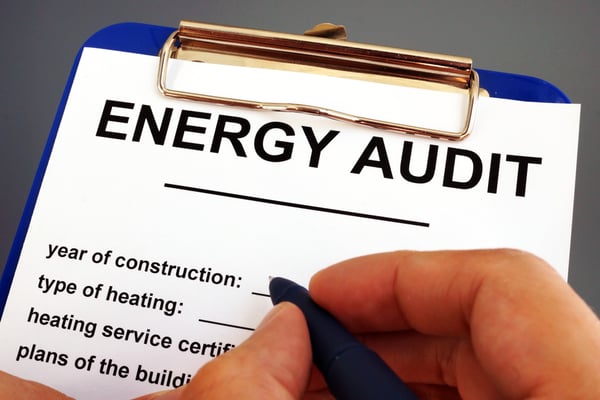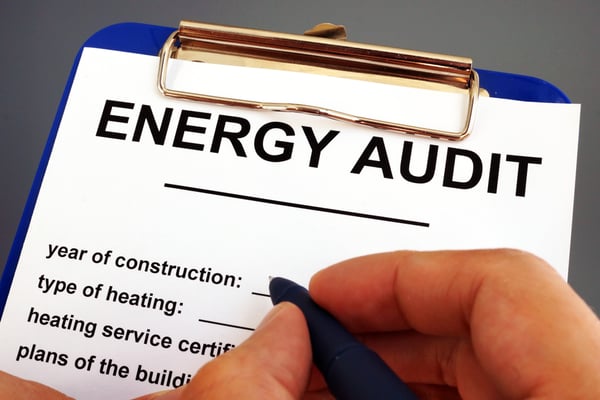Air pollution has been linked to many health problems, which include respiratory and heart diseases. Additionally, a recent Harvard study found that coronavirus mortality increases in regions with high particle levels. Air pollution is often associated with traffic, but a much larger source of emissions is ignored. The transport sector is responsible for 28% of GHG emissions, but the construction sector is responsible for 40%.
Buildings produce direct emissions when they use combustion equipment, such as diesel generators and natural gas boilers. They also produce indirect emissions when they consume electricity from power plants that burn fossil fuels. When buildings improve their energy efficiency, direct and indirect emissions are reduced.
Make your building healthier for occupants by improving indoor air quality.
Importance of an Energy Audit
Each property has a unique energy consumption profile and the ideal combination of energy efficiency measures may vary. To identify the most appropriate upgrades for a building, the best starting point is a professional energy audit. This way, building owners can know the cost and financial return of all potential improvements before spending the funds. An energy audit also helps property owners avoid measures that are not effective in their buildings.

Because an energy audit analyzes savings by energy source, it is possible to estimate emissions reductions after recommended building upgrades. The audit reveals two important pieces of information:
- Energy savings per dollar invested.
- Avoided GHG emissions per dollar invested.
Generally, the best results can be achieved by modernizing old furnaces and boilers that run on heating oil. This not only reduces heating costs, but also emissions per BTU. When many buildings upgrade their heating equipment, the cumulative effect can have a positive impact on urban air quality.
Depending on the building's location, the estimated emissions reduction could help you qualify for a clean energy grant or a low-interest loan. In New York City, properties larger than 25,000 square feet will be subject to an emissions reduction law starting in 2024. An energy audit can identify the most cost-effective measures to meet the goal.
Changing energy sources to reduce emissions
Energy efficiency measures can achieve better results when energy sources are also optimized. For example, solar energy is profitable in many parts of the US and homeowners can claim a 26% federal tax credit for their renewable energy investment (as of 2020). Building owners can also switch from oil boilers and furnaces to gas units – natural gas has fewer emissions per BTU of heat supplied.

With high-efficiency heat pumps, building owners also have the option to go 100% electric and eliminate on-site emissions. Indirect emissions remain, as fossil fuels still dominate the electrical grid. However, it is preferable to concentrate emissions in power plants rather than releasing them directly into cities.
The electrification of buildings has another important benefit: if the local grid starts using a higher percentage of renewable energy, indirect emissions will automatically be reduced.
- Suppose you have a building that consumes 100,000 kilowatt-hours per month, in a region where the electrical grid produces 0.8 kg of CO2 equivalent per kWh.
- In this case, indirect emissions are 80,000 kg of CO2 equivalent per month.
- However, if the network reduces its emission intensity to 0.6 kg CO2 eq/kWh, the indirect emissions from this building are reduced to 60,000 kg per month.
Using electricity for space heating and hot water may not be viable in some buildings. However, switching from heating oil to natural gas can cut emissions by half in many cases. Below is a simplified example where a 300,000 BTU/hr boiler is upgraded from a 70% efficient oil unit to a 90% efficient gas unit. According to the US Energy Information Administration (US EIA), heating oil releases 73.16 kg of CO2 per million BTU, while natural gas releases 53.07 kg of CO2 per million BTU.
|
Boiler fuel |
Capacity |
Efficiency |
Heat input |
Emissions |
|
Heating oil |
300,000 BTU/h |
70% |
428,571 BTU/h |
31.35 kg CO2/h |
|
Natural gas |
300,000 BTU/h |
90% |
333,333 BTU/hour |
17.69 kg CO2/h |
This example has been drastically simplified for demonstration purposes. In a real building, it would be necessary to carry out energy modeling for each boiler to analyze emissions. However, the estimated reduction in emissions is 44%, based on an hourly comparison with both boilers at full capacity.
The natural gas boiler in this example also reduces heating costs. New York pays $1,210 per therm for natural gas (100,000 BTU/therm) and 232.5 cents per gallon for heating oil (137,000 BTU/gallon). The oil boiler uses $7.27 per hour, while the gas boiler uses $4.03 per hour, which is 45% less.
This is a very simplified analysis, but it demonstrates how energy costs and GHG emissions can be reduced simultaneously with energy efficiency. Building owners can help improve air quality by reducing emissions while reducing their energy costs.

